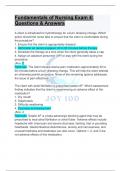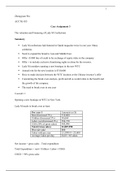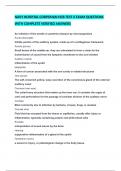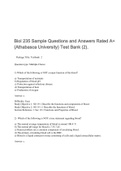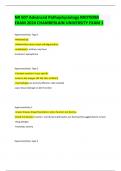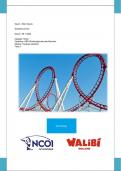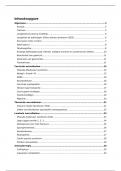Exam (elaborations)
Exam 4: Fundamentals of Nursing Exam 4: Questions & Answers: Updated : Guaranteed A+
- Course
- Fundamentals of Nursing
- Institution
- Keiser University
A client is scheduled for hydrotherapy for a burn dressing change. Which action should the nurse take to ensure that the client is comfortable during the procedure? 1. Ensure that the client is appropriately dressed 2. Administer an opioid analgesic 30 to 60 minutes before therapy 3. Schedule th...
[Show more]
